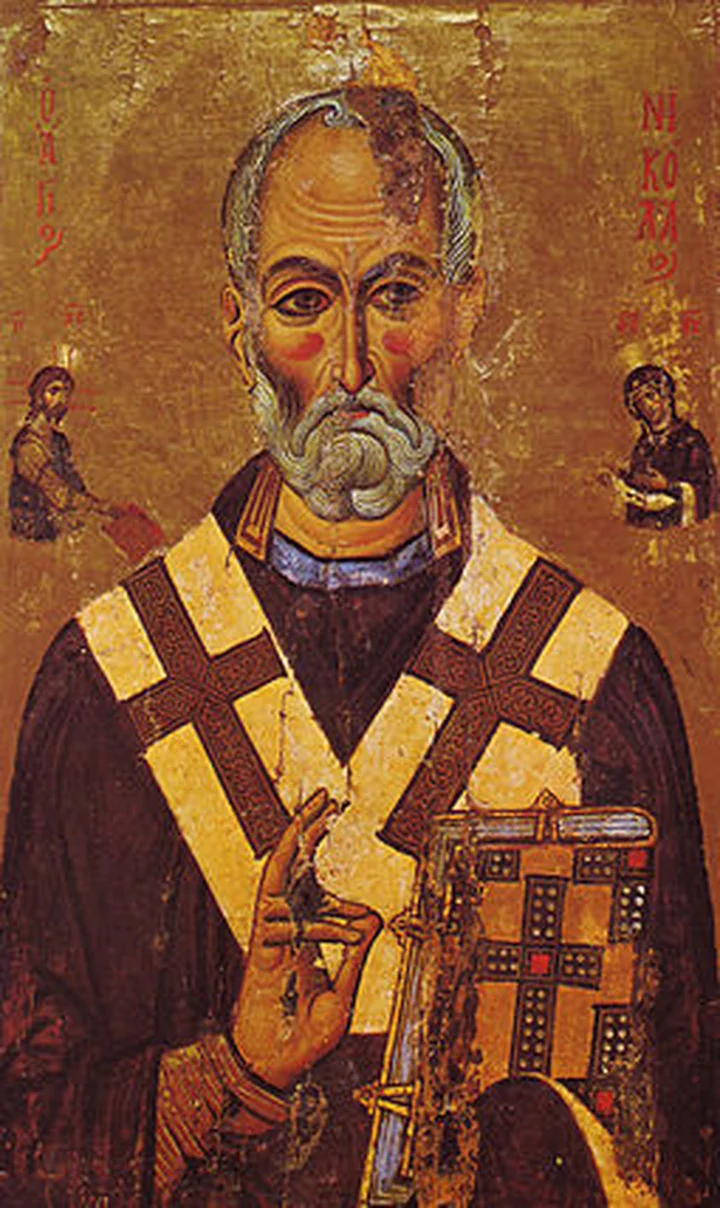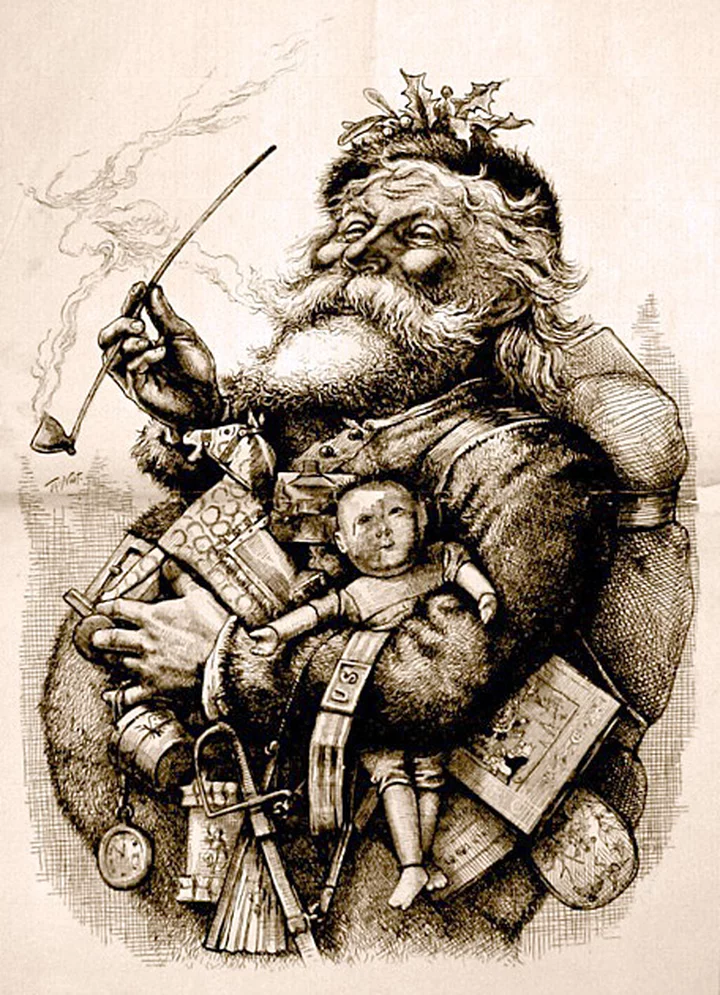Today, December 6, is dedicated by Catholics and Eastern Orthodox adherents to Saint Nicholas, who died, according to the early Church Fathers, on this date in 343 AD (thus preceding my dad’s death, exactly 33 years ago, by 1,626 years). Saint Nicholas morphed into St Nick into Kris Kringle into Sinterklaas into Father Christmas, he of fat belly, white beard, wire-rimmed glasses and with a workforce of elves rivaling Amazon’s.
There really was a Nicholas, born, according to tradition, on March 3, 270 to a wealthy Christian family in (now) the southern Turkish village of Patara, near Myra. He secretly donated three bags of gold to a poor father who, because he couldn’t afford to pay for his daughters’ dowry, was about to sell them into prostitution (is that really the best solution he could come up with???). (It’s OK, I guess, the story’s apocryphal.) Nicholas was rewarded for his generosity by being ordained Bishop of Myra, and was subsequently canonized. A thousand years later, a group of French nuns, in his honor, took to leaving food on the doorsteps of poor people, and the connection Saint Nick and pressies was born.
Researching this story reminded me of our 2007 trip through Turkey, when we saw these ancient rock tombs above Myra, where Saint Nicholas was bishop in the early 300s. (Barry Evans)
Born, but hardly developed into the “ho-ho-ho” characters you’ll be seeing for the next couple of weeks in malls, on the gazebo and in ads for Coca Cola. (Which began in the 1930s — is Coke still doing that?) For instance, those reindeer pulling his sleigh, in contravention of aerodynamic theory? Blame that on the Norse god Odin, “the old blue-hooded, cloaked, white-bearded Giftbringer of the north, who rode the midwinter sky on his eight-footed steed Sleipnir, visiting his people with gifts” according to folklorist Margaret Baker. “Odin, transformed into Father Christmas, then Santa Claus, prospered with St Nicholas and the Christchild, became a leading player on the Christmas stage.”
You may be wondering why, if December 6 is his feast day, we actually celebrate his arrival the night before Christmas, nearly three weeks later? Blame that one on Martin Luther and the Reformation. With no more veneration of saints, the Protestant church quietly merged Nick into the Christmas celebrations. According to Wikipedia, “The custom of gifting to children at Christmas was propagated by Martin Luther as an alternative to the previous very popular gift custom on St. Nicholas…But Nicholas remained popular as gifts bearer for the people.”
What Wikipedia doesn’t seem to address is, “Why is Santa white?” Others have, however, and it’s a bit of a mixed bag. The original Saint Nicholas was Greek, and most Greeks, in the eyes of, say, the US census, are white. But in a couple of accidents of history, forensic archaeologists have had access to his bones, half of which ended up in Venice and half in Bari in southeastern Italy, where a cathedral built in 1087 to honor him depicts him as “a Middle Eastern man with very dark skin.” The forensics agreed: “He resembled a light brown man of color.”
(Addressing a Fox News commentator that he was as white as Jesus (!), philosophy professor David Kyle Johnson wrote in Psychology Today that Saint Nicholas looked “much more like Osama Bin Laden than today’s average ‘white male’ or Coca-Cola’s Santa Claus.”)
Finally, yes, Virginia, there is a Santa Claus. He can be reached at this address: Santa Claus, North Pole, Canada, H0H 0H0; no postage is required.



CLICK TO MANAGE